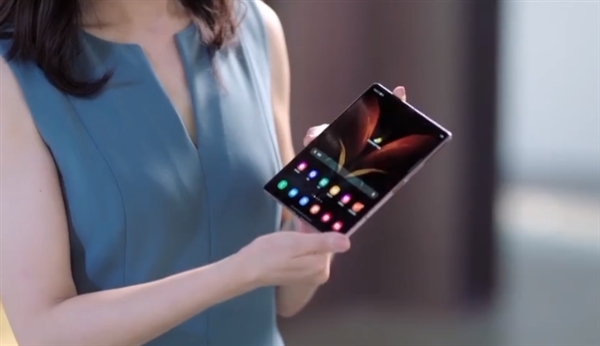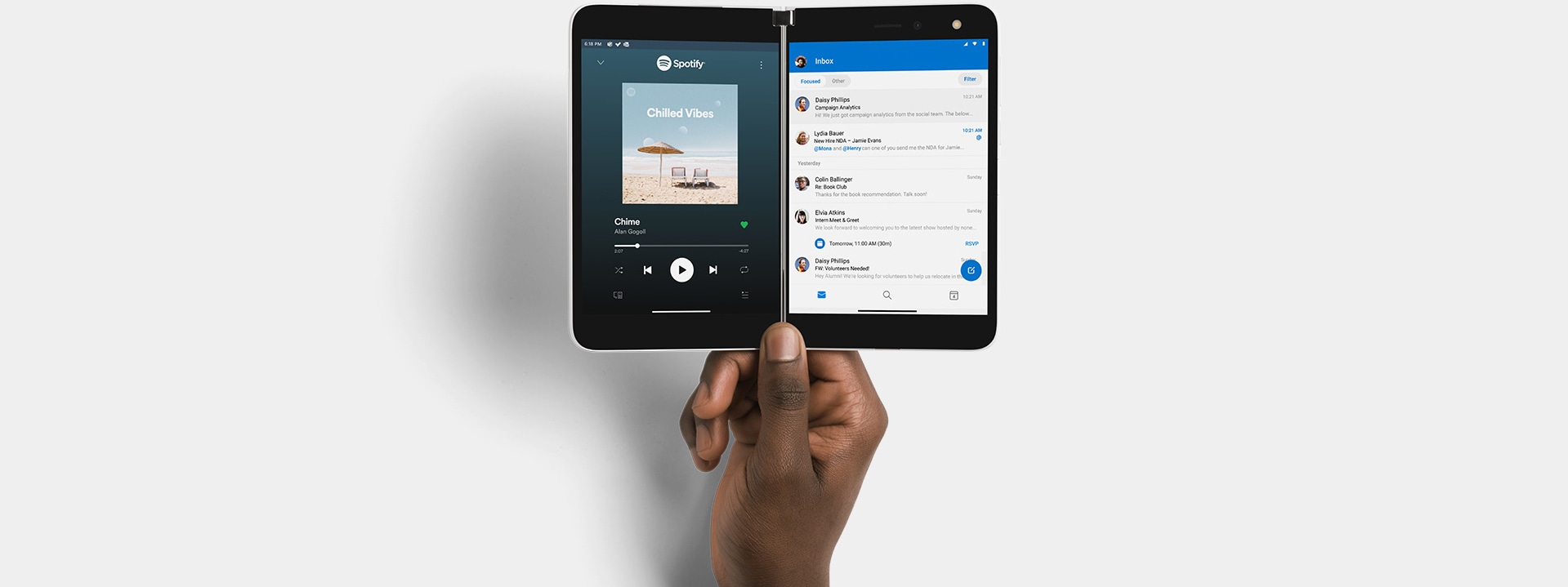Last week, we posted a special story on under-display cameras with inputs from the CEO of OTI Lumionics, Michael Helander. We discussed Xiaomi, ZTE, and under screen cameras in general and how the technology would evolve in the coming years.
Today, we publish the second and the final part of the series, focused on transparent OLEDs and foldable displays. If you haven’t read the first part yet, I would suggest reading it first here.
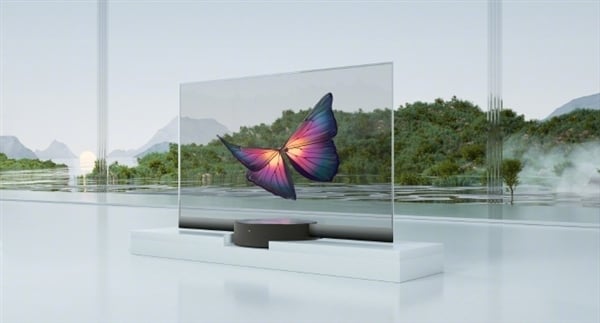
As you might have already realized from the first part on under screen cameras, transparent OLED development is the real reason why we can add cameras underneath the display. But the first set of devices to get a completely transparent screen are not going to be smartphones, rather, it would be much larger devices like TVs and automobiles.
Transparent, Clear OLEDs won’t likely replace your traditional TVs
Remember Xiaomi’s premium Mi TV Lux OLED transparent TV?
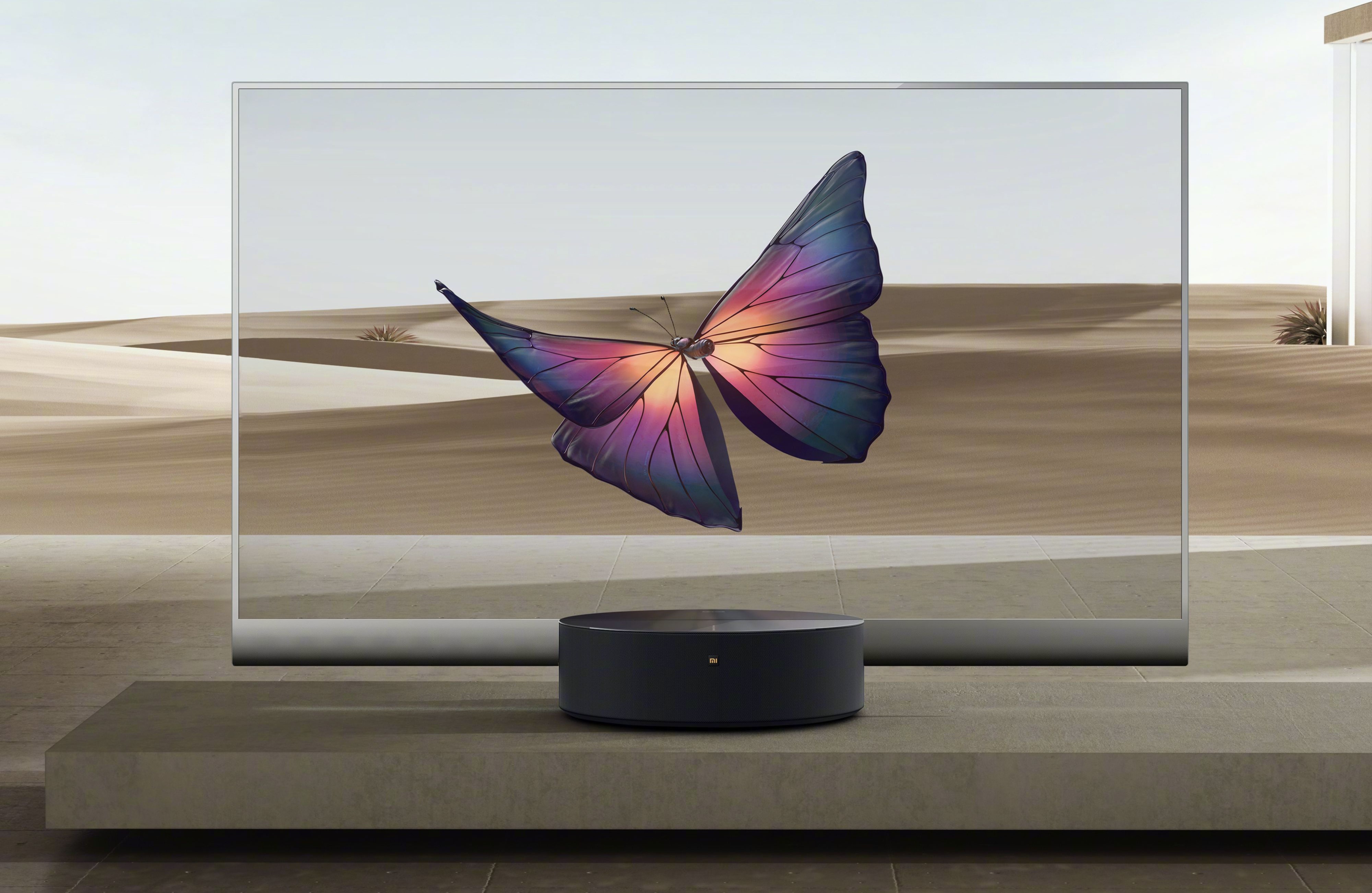
It looked very cool for a 2020 TV. But transparent OLED TVs are all set to become a lot more transparent in the coming years.
Xiaomi’s Mi TV Lux had a transparency of around 33% which was pretty good, but Michael, CEO of OTI Lumionics, says its ConducTorr™ CPM material solution can help display makers manufacture TVs with nearly 65% transparency. The company even showcased such a transparent panel at Shanghai with ITRI from Taiwan. And it is currently working with panel makers to mass produce transparent displays with such high levels of transparency.
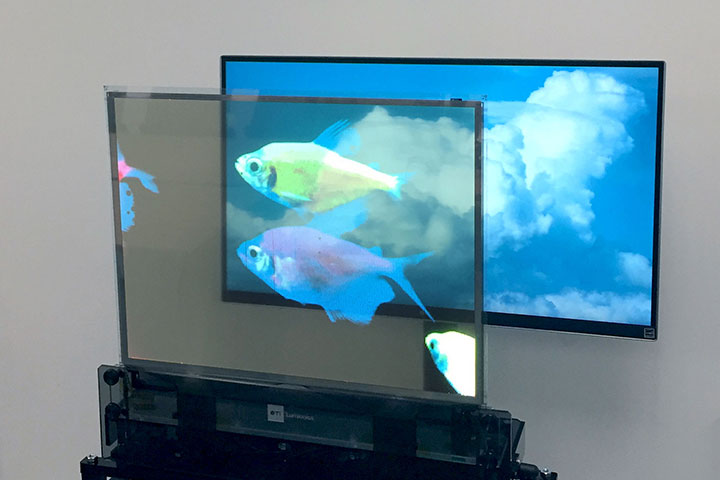
This brings us to the next big question.
Will the next revolutionary TV in the industry be a transparent OLED TV? Will they replace our standard OLED TVs in the future?
Michael said that he was a bit skeptical about transparent OLEDs replacing our regular OLED TVs. “To me, the value is not a transparent OLED TV replacing the normal TV that you have in your life, like the living room or your gaming monitor. I think those will stay the same. Cost will come down and we’ll see more people with OLED TV’s. And where the transparent TV is going to come in is new applications.”
He said that transparent OLED TVs are likely to be used in new places. He was quick to point out the news about the Beijing Metro installing LG’s transparent OLED TVs to display travel information.
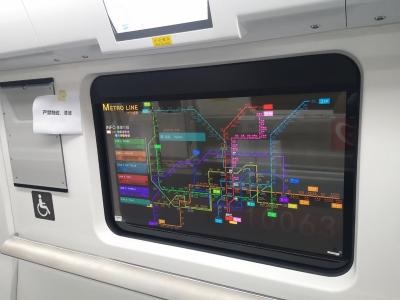
Michael says that when it comes to transparent OLEDs or even regular OLEDs in general, some of their most exciting applications have not been thought about yet.
For example, take LG’s rollable OLED TV. It was initially conceptualized as a TV with a minimalistic design for your home. However, he said that consumers who checked out the TV had a very interesting question, ‘How much does a whole box weigh?’
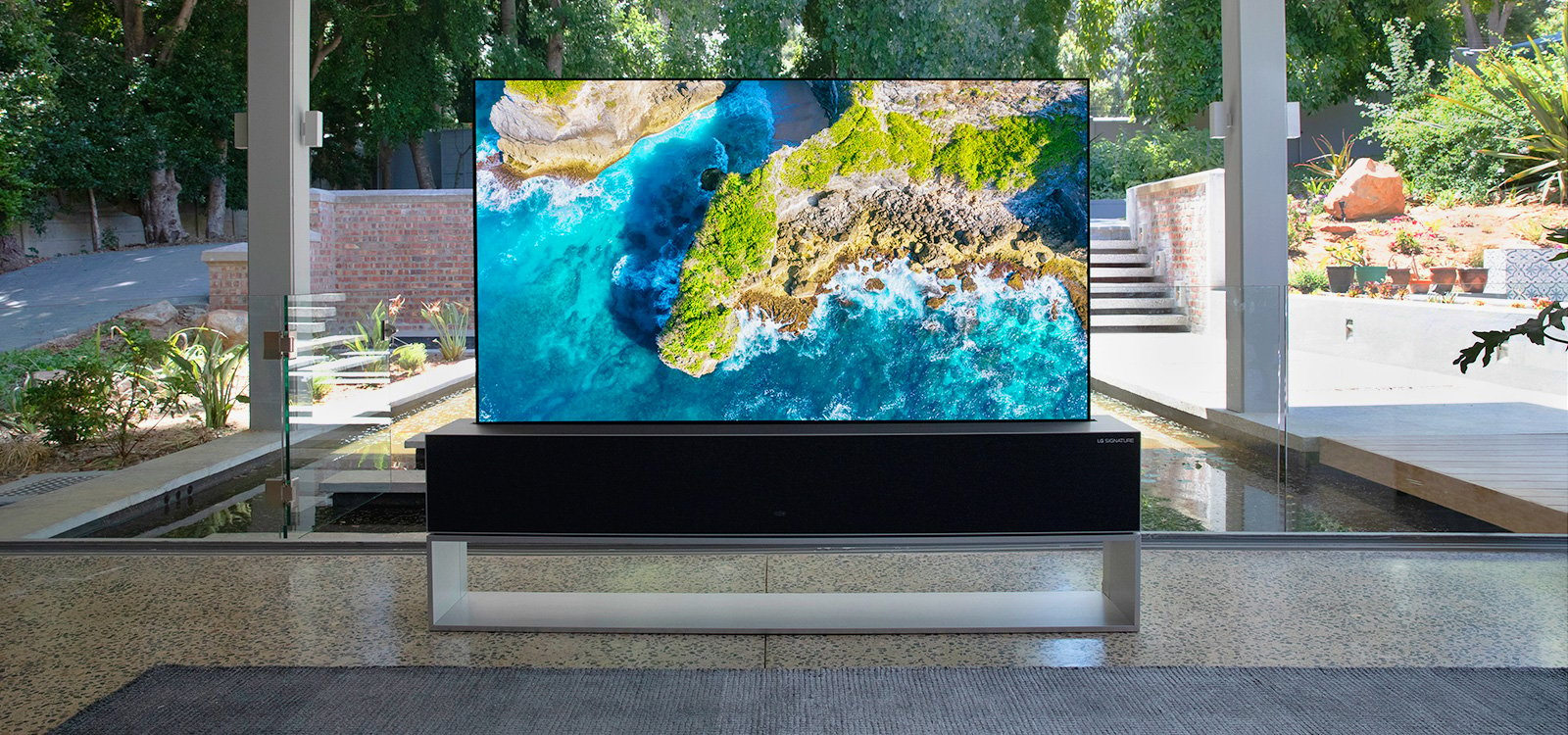
Source: LG
He explains that after seeing the TV in the enclosed state, consumers suddenly realized “my TV now rolls up to this little box and it’s pretty light. Suddenly, I can move the TV around wherever I want. Take it to my friend’s place.”
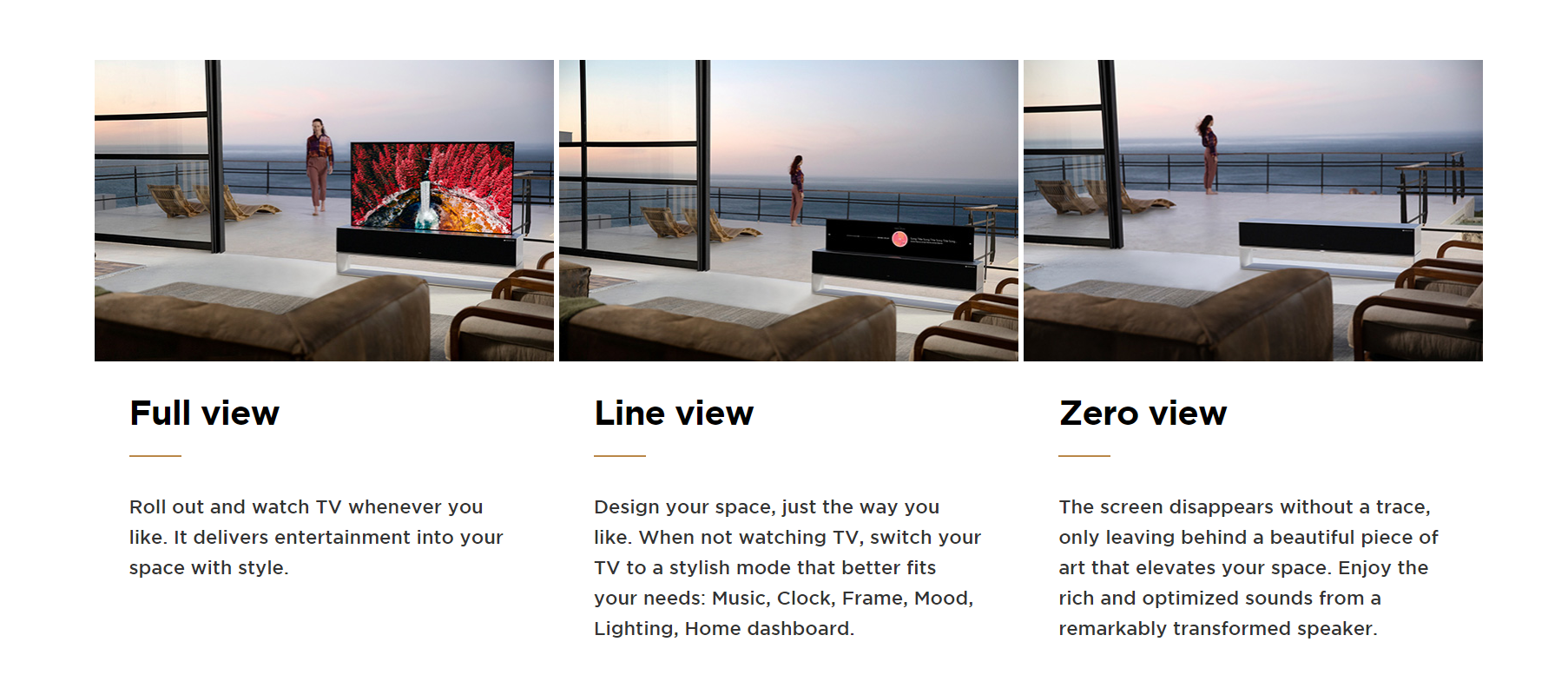
Source: LG
This feedback from the customers got the company thinking and they were considering bringing down the size of the base unit by making it smaller, narrower, and lighter, potentially allowing customers to carry it around. This was probably never in their minds when they developed this product, but it shows how new applications for transparent and flexible OLEDs will open up in the coming years.
Also Read: LG is launching a 163-inch TV with a microLED display
Transparent OLEDs will take over your high-end Automobiles
Michael further explains that ultra-clear and transparent OLEDs can shine in the automotive industry.
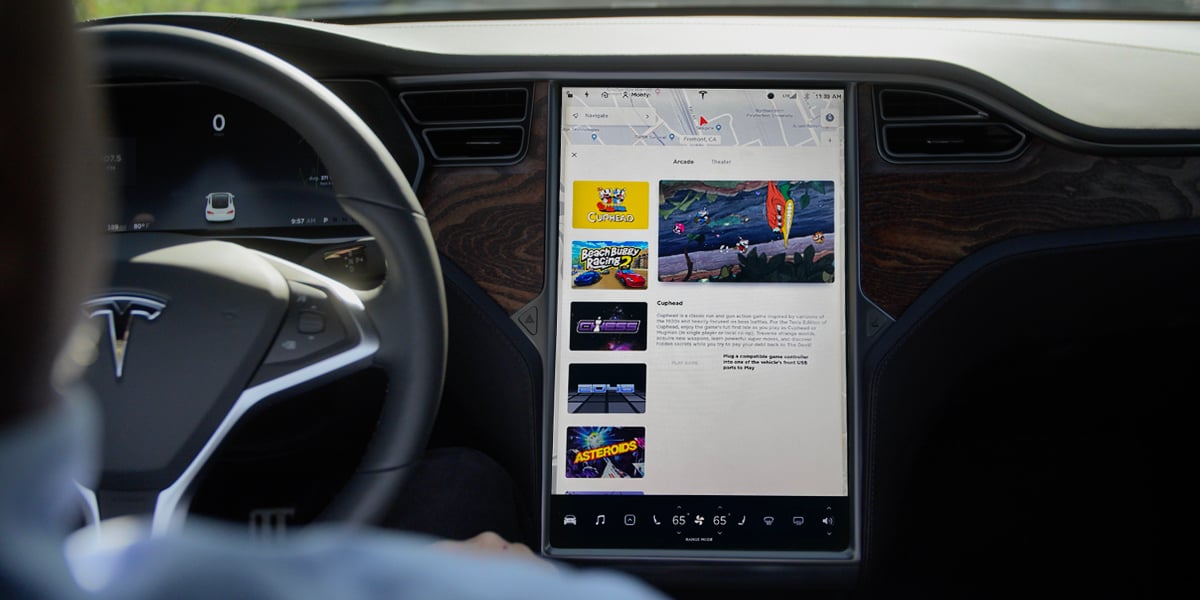
Source: Tesla
It’s the age of cars with large displays in the center console and we have to thank Tesla for that. OTI Lumionics has received a lot of interest from car manufacturers to add one large, transparent display on the console. These carmakers believe that such a transparent display would offer a futuristic feeling to the driver and the passengers. Another benefit is that this design would make the interior look large and roomy.
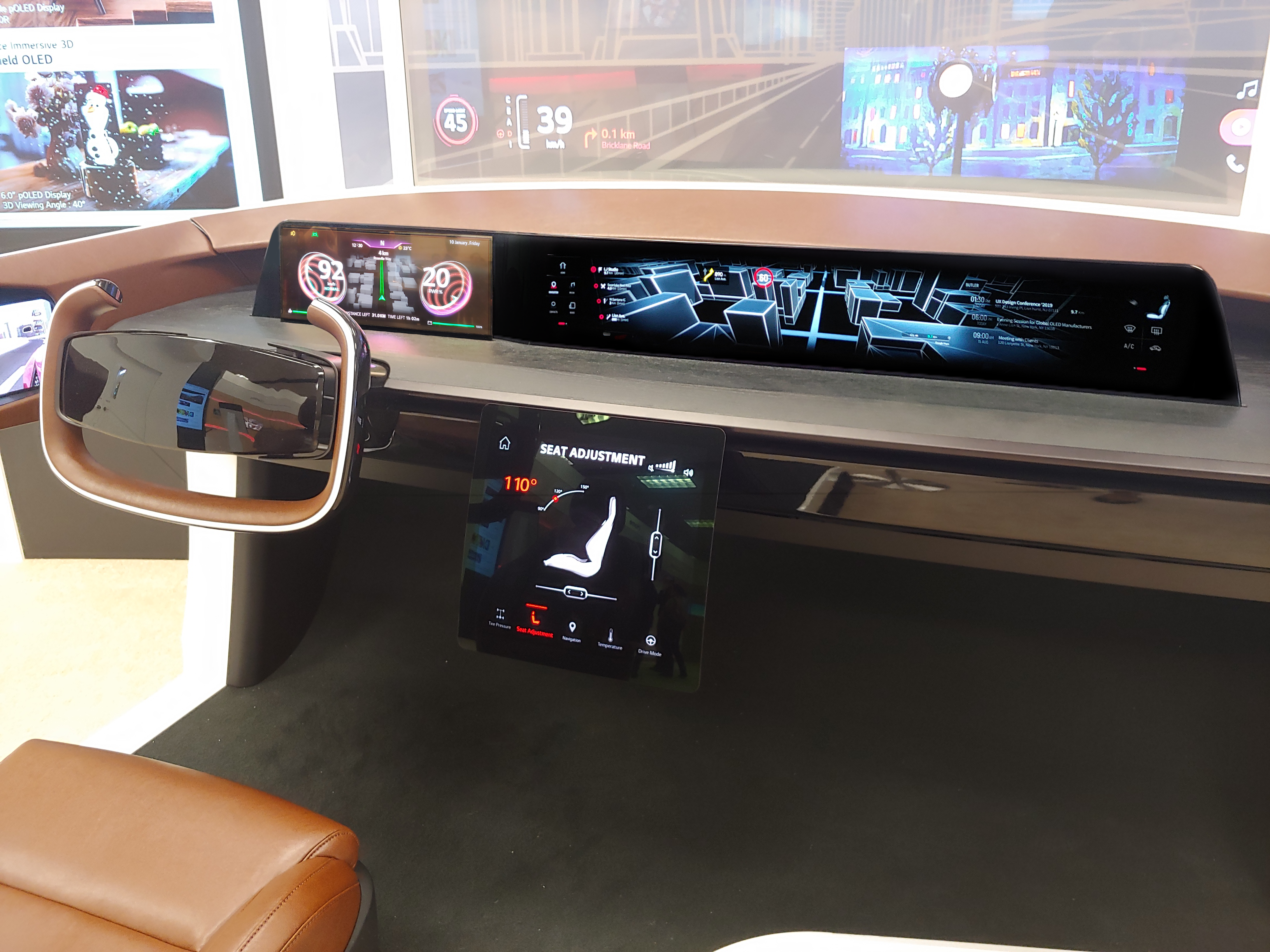
Source: LGDisplay
But there’s another area where clear, transparent OLEDs can shine – HUDs and side windows. The current transparent OLEDs are essentially just 30-40% transparent, so your see-through image is blurry. For using OLEDs in Heads up display or even on the side windows of cars, the OLEDs need to be very extremely transparent, allowing a clear view of what’s happening outside. So the driver and the passengers should be able to clearly see pedestrians, stop signs, and traffic lights.
Even BOE recently demoed a transparent OLED solution for car side windows with a smart dimming feature.
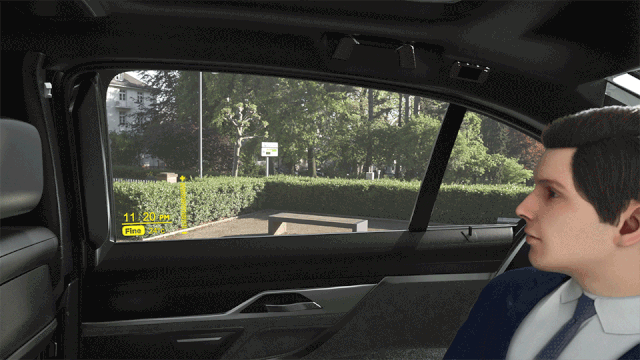
This sounds like a cool and futuristic application of OLEDs. But how far off are we from seeing such applications in real life, especially if it’s going to be very expensive to manufacture?
Transparent OLEDs of the future won’t have exorbitant manufacturing costs
The real area where transparent OLEDs will shine will be in larger form factors like car windows, HUDs, or even new applications like a conference table with a transparent OLED touch screen on top.
But in order for them to be feasible, it’s important that the manufacturing cost isn’t exorbitantly high.
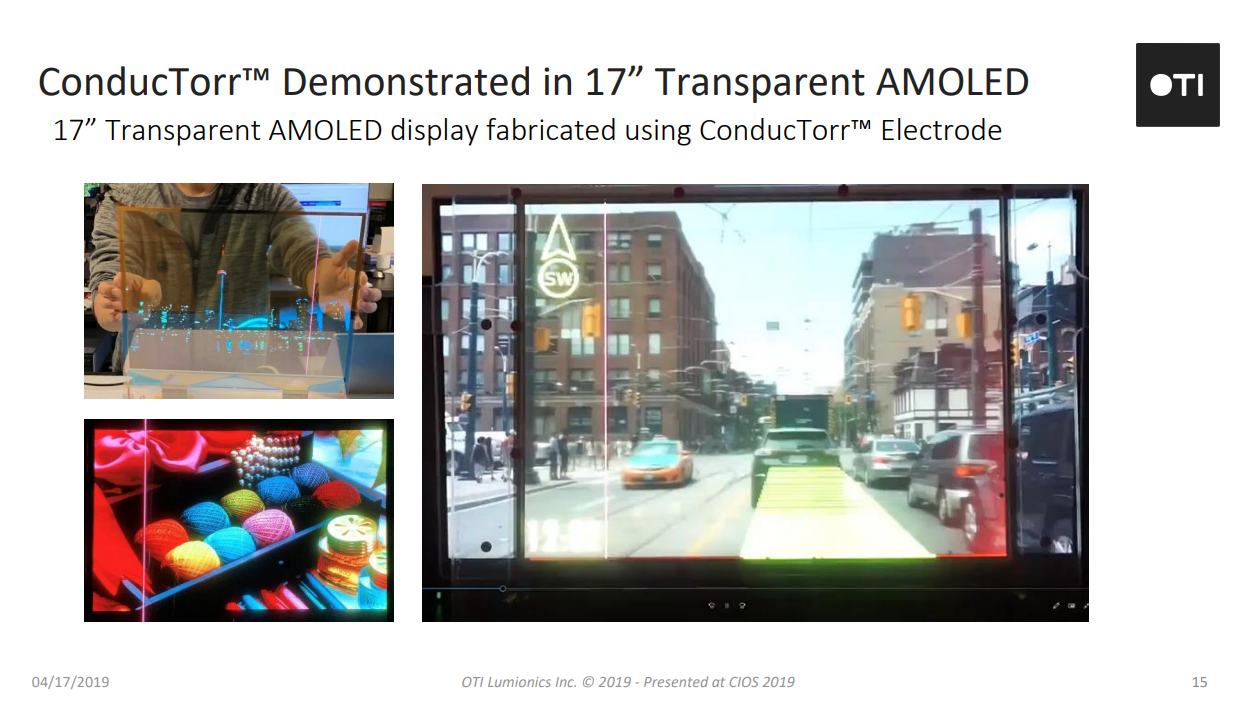
source: OTI Lumionics
But Michael says that it’s not going to cost a bomb manufacturing these super transparent OLEDs. “The beauty of our solution is the process of manufacturing, the cost of making one hole in one area is exactly the same as making a million holes on the whole display regardless of the size. [Our] technology is scalable, to a very small display to a very large display.”
So it looks like cars and devices with transparent OLEDs aren’t very far off. And in the next few years, we might actually come across multiple products from different fields using a transparent OLED to enhance our experience.
Another emerging field where OTI Lumionics is helping display makers is foldables.
Editor’s Pick: Samsung unveils foldable OLED panel with world’s smallest curvature
OTI Lumionics helps to develop Power Efficient Foldable Displays
Foldables are the future of smartphones and slowly, but steadily, we are seeing an inflow of foldable smartphones in the market. Samsung recently announced its second-generation Galaxy Fold Z 2 globally and even Motorola has its Razr foldable in the market. Next year, we can expect more manufacturers to join the foldable race.
OTI Lumionics is not directly involved in the manufacturing of flexible, foldable OLED displays. But they do play an important part in foldable OLED development. The company’s cathode patterning technology helps display manufacturers to improve the power efficiency of their foldable panels.
Michael explains that foldable smartphones have large displays, comparable to tablets and even small laptops. But you can’t add a proportionally larger battery on the device, which affects battery life.
In fact, Michael revealed that as you increase the size of the foldable OLED panel, its power consumption doesn’t increase linearly. For example, the power consumption of a 12-inch OLED panel is not double the consumption of a 6-inch panel. It’s way more than that.
Micheal explains, “Part of that is because the top metal layer is one common layer that coats the whole display. So all the electricity and current that goes through every single Pixel in the display has to go through that very thin layer of metal and then conduct all the way to the edge of the screen and through the contacts back into the driver circuit. And so, [for a] 5 or 6-inch mobile panel that’s not a problem. As you start going to a tablet, laptop, monitor [size] that becomes problematic and can limit the brightness and power consumption of the display. This is obviously a very important issue for a foldable.”
“Our same patterning [for making transparent OLEDs] technology can be used to help solve that kind of conductivity issue which then lowers power consumption and allows you to build foldable devices that have comparable power consumption to a smaller size this way.”
Michael believes Surface Duo form factor is better for productivity than Foldables
2020 foldable smartphones aren’t perfect. They still have the issue of durability as compared to other devices and then you have to ignore some issues like the crease line on the display.
When asked about the crease line on foldables, Michael said that it’s technically challenging to remove that crease line without compromising the mechanical strength of the display. In fact, Michael says that he prefers a form factor like the Microsoft Surface Duo over foldables with two separate displays and a hinge.
Michael added that from a productivity perspective, having two separate displays made a lot of sense.
“[On] a larger display, what I want is to be able to show multiple applications — side by side and then on a larger area display, I either have to draw a line on the display or have that cut across individual displays, which is why again.. my personal opinion is the Microsoft Duo type of concept makes a lot more sense in terms of value proposition particularly because it can be made today with existing displays at a fraction of the cost of using a very complicated, hinge and folding structure and flexible glass and flexible display, which as we’ve seen in the Galaxy fold series is incredibly expensive.”
He adds that foldable displays are definitely fun but when it comes to durability, price, and multi-tasking, a dual-display design like the Surface Duo can be very useful. He further notes that thickness is another issue with foldable phones, which doesn’t make them comfortable to put it in your pockets.
This is actually a pretty good point. When you look at the Galaxy Fold Z 2, it measures 16mm in thickness in its folded state, while the Surface Duo measures under 9mm. So in the current scenario, a form factor like the Surface duo makes sense.
Transparent, Foldable, Flexible OLEDs will reach more sectors
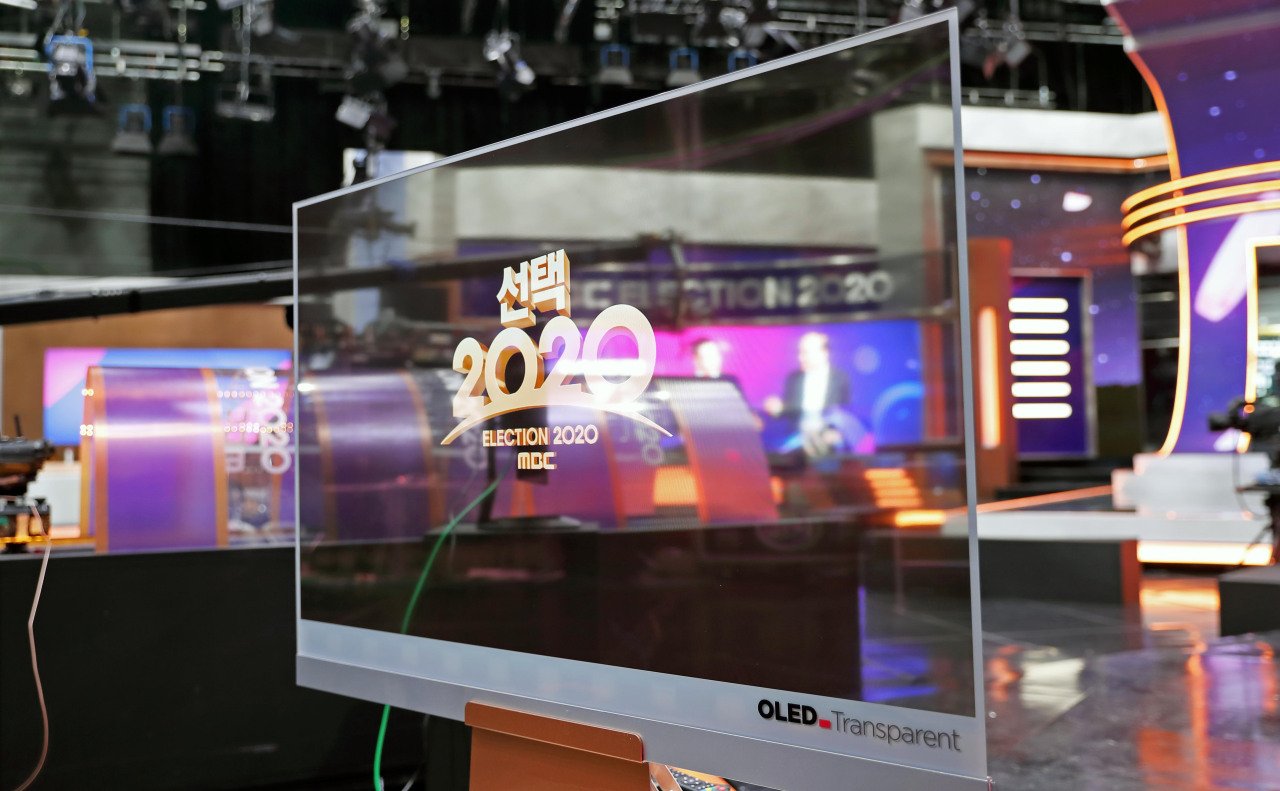
It’s clear that OLEDs are going to take over a lot more sectors in the coming years, right from our home, offices, transportation to AR and VR. Companies are spending billions of dollars in research and development of new generation OLED panels and there’s no doubt that we’ll soon see better and more power-efficient OLED panels in the coming years.
And when you see a product using transparent, foldable, rollable OLEDs, know that it is companies like OTI Lumionics that work behind the scenes to bring concepts that were originally seen only in movies to reality.


